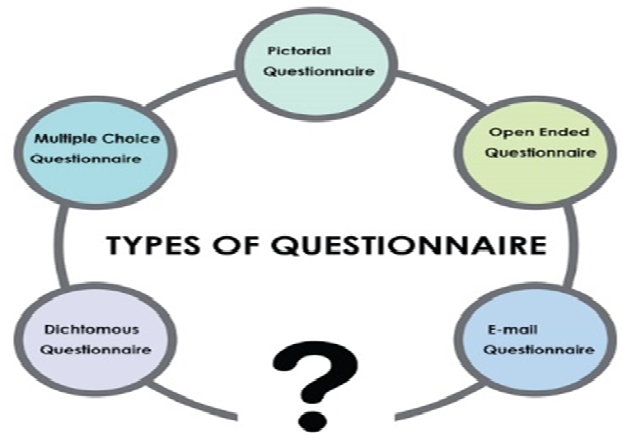What are the different types of questionnaires involved in research? And explain how to select the type of questionnaires for the specific study.
Brief:
- Survey questionnaire analysis can be named both, quantitative and subjective technique relying upon the idea of inquiries.
- In particular, answers got through shut finished inquiries with the examination of different decision answer choices utilizing quantitative strategies, and they may include pie-graphs, bar-diagrams and rates.
- Answers acquired to open-finished survey questions are examined utilizing subjective strategies, and they include conversations, and statswork blog explains the necessary investigations without the utilization of numbers and figurings.
Introduction:
A survey questionnaire analysis is an exploration instrument comprising of a progression of inquiries to assemble data from respondents. Questionnairesare as a sort of composed meeting. They can be done vis-à-vis, by phone, PC or post. Survey questionnaire analysis gives a generally modest, snappy and effective method of getting a lot of data from a vast example of individuals.Information moderately rapidly because the analyst shouldn’t be available when the questionnaires were finished. It is helpful for enormous populaces when meetings would be unrealistic. In any case, an issue with votes is that respondents may lie because of attractive social quality. A great many people need to introduce a positive picture of themselves thus may lie or curve reality to look great, e.g., students would overstate correction term. Questionnaires can be compelling methods for estimating the conduct, perspectives, inclinations, conclusions and, goals of generally huge quantities of subjects more economically and rapidly than different strategies. Regularly a poll utilizes both open and Closed questionnaires to gather information. This method is helpful as it implies both quantitative and subjective information can be gotten for the analysis of service quality questionnaire.
Types of questionnaires:
Exploratory questionnaire (qualitative)
Exploratory questionnaires are Structured questionnaire analysis used to collect the qualitative data that information can be observed and recorded but not in a numerical form. It’s used to obtain approximate and characterize the data. A case of personal information would be somebody giving your input about your composition. They may specify things about the tone, clearness, word decision, and so forth, it causes you to order your essay. However, you can’t connect a number to the criticism in the questionnaire development in research. Exploratory surveys are ideal when you’re in the beginning phases and need to become familiar with a subject before planning an answer or theory. For instance, in case you’re in the beginning phases of item improvement. You don’t think enough about the market; at that point, exploratory questionnaires are ideal using the questionnaire hypothesis survey.

Formal standardized questionnaire (quantitative)
They’re otherwise called organized surveys. These are utilized to gather quantitative information which is data recorded as a check or mathematical worth. The data is quantifiable, which implies it very well may be utilized for numerical counts or factual investigation. It addresses the topic of how much, the number of, or how frequently. A case of quantitative information would be the response to the accompanying inquiry, “how old are you?” which requires a mathematical answer. Normalized surveys are best utilized when you’ve framed underlying speculation or worked out a model for an item. You’ll utilize it to stretch test your suspicions, plans, use cases, and so forth before going further with item advancement. Because of its reasonable centre, the inquiries you pose are limited in scope and request detailed data.
Similarly, as essential as the survey type are the inquiry types you pick. Not all inquiry types are ideal in each circumstance. That is the reason it’s vital to comprehend the kind of poll you’re making first. With that data, it gets simpler to pick the right sorts of inquiry useful for questionnaire design business research
Open-ended questionnaire
As the name states, these questions are open for the respondent to answer with more freedom. Instead of presenting a set of answers choices, the respondent writes as much is as little as they want. It is ideal for exploratory questionnaires which collect Qualitative data analysis.
Closed questionnaire
Closed questionnaires structure the appropriate response by just permitting reactions which fit into pre-chosen classes. Information that can be put into a classification is called ostensible information. The classification can be limited to as not many as two choices, i.e., dichotomous (e.g., ‘yes’ or ‘no,’ ‘male’ or ‘female’), or incorporate very unpredictable arrangements of choices from which the respondent can pick (e.g., multiple choices). Closed questionnaires can likewise give ordinal information (which can be positioned). This type frequently includes utilizing a persistent rating scale to gauge the quality of perspectives or feelings and useful in business survey questionnaire design. For instance, emphatically concur/concur/nonpartisan/differ/firmly differ/incapable to reply.
Multiple-choice questionnaire
This inquiry gives the respondent top-notch of answer choices, and they can choose at least one. The test with numerous decision questions is giving fragmented answer choices. For instance, you may ask what industry accomplish your work in and rattle off 5 of the most widely recognized enterprises. There are more than five ventures on the planet so that a few people won’t be spoken to in this circumstance. A basic answer to this issue is adding an “other” choice.
Dichotomous questionnaire
A question with only two possible answers is Dichotomous questionnaire. It often solves a yes or no problem, but it can also be something like agree/disagree or true/false. Use this when all you need is necessary validation without going too deeply into the motivations.
Scaled questionnaire
Scaled questions are common in questionnaires, and they are mainly used to judge the degree of a feeling. Both exploratory and standardized questionnaires can be used because there are many different types of scaled questions such as:
- Rating scale
- Likert scale
- Semantic differential scale
Pictorial questionnaire
Images are the final type of question used in questionnaires substitutes’ text. Respondents are asked a question and allowed to choose pictures. It usually has a greater response rate than other question types.
Conclusion:
Statswork states that questionnaires are the foundation of studies. Without them, there’s nothing to examine. Before you make a plunge and begin planning your survey to gather such delicious client information, there are various activities. Settle on the kind of poll and your objectives, centrearound the correct inquiries, sort out who the objective gathering is, thus significantly more. Make sure to return to this guide at whatever point you’re in question from the research questionnaire and hypothesis development.
References:
- Meadows, K. A. (2003). So you want to do research? 5: Questionnaire design. British journal of community nursing, 8(12), 562-570.
- McLafferty, S. L. (2003). Conducting questionnaire surveys. Essential methods in geography, 1(2), 87-100.
- Edgerton, H. A., Britt, S. H., & Norman, R. D. (1947). Objective differences among various types of respondents to a mailed questionnaire. American Sociological Review, 12(4), 435-444.

 Previous Post
Previous Post Next Post
Next Post